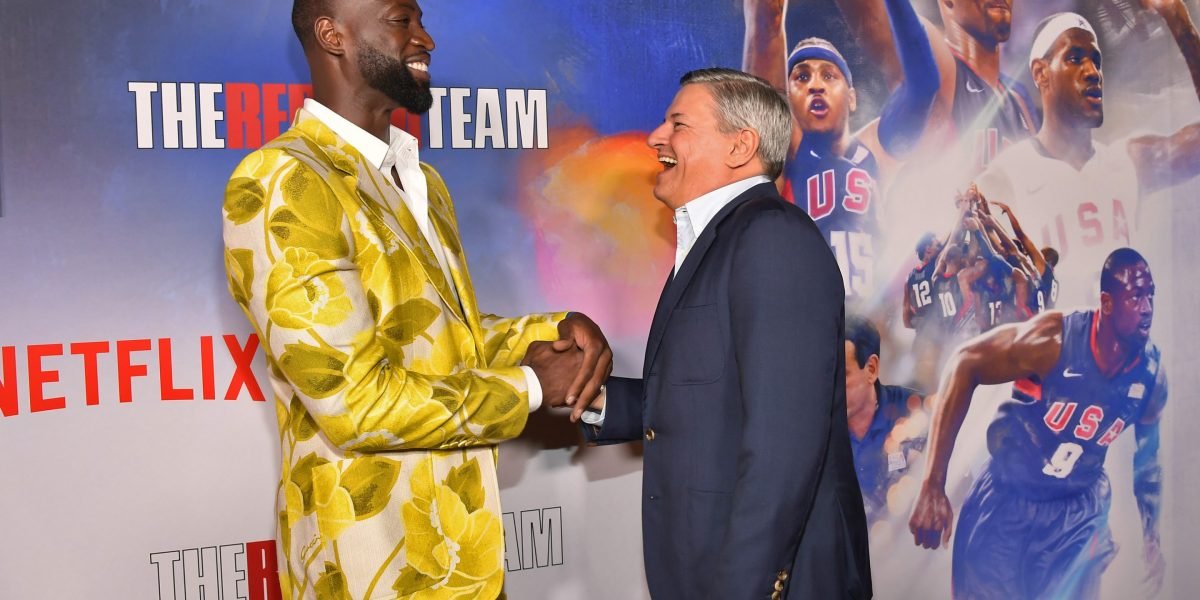
Netflix co-CEO Ted Sarandos offered a peek into Netflix’s live sports strategy on its second-quarter earnings call Thursday.
Instead of buying up the rights to entire season’s worth of basketball, football, or baseball, Netflix would rather broadcast a few of the best games without taking on “a lot of tonnage from any one league,” he explained.
This year, Netflix will air two NFL games on Christmas Day. That decision reflects what Sarandos called Netflix’s “event model” where it could draw subscribers’ attention to a few very specific games to watch.
“It creates a lot of real excitement with the service and it’s one day of football,” he said on the earnings call.
The NFL would be one of Netflix’s first moves into regular-season sports. So far, its other live events have been exhibition matches. Nonetheless, they have been high-profile fixtures like the Netflix Slam matchup between Spanish tennis players Rafael Nadal and Carlos Alcaraz, and the Netflix Cup celebrity golf tournament that also featured pro golfers. In November, Netflix will air the long-delayed celebrity boxing match between former heavyweight champion Mike Tyson and YouTuber Jake Paul.
Netflix also has a slate of sports documentaries, which it considers a part of its overall sports strategy, like Formula 1: Drive to Survive, The Redeem Team about the 2008 Olympic basketball team, and Beckham about English soccer legend David Beckham.
Netflix’s targeted approach stands out in a time when the broadcasting rights for sports leagues are soaring, as they remain one of the only reliable ways to drive viewers to live television (or streaming). Sports leagues, well aware of the negotiating power they have with both cable companies and streamers, have been squeezing broadcast partners, demanding higher fees for fewer games.
The NBA is in the home stretch of negotiating an 11-year, $76 billion media deal with Disney, Comcast, and Amazon that would leave out its long-time partner Warner Bros. Discovery. That’s up from the previous $24 billion deal reached in 2014.
Historically, the NBA only had two broadcasters: Disney and Warner Bros. Discovery. But this time around, the league made clear it intended to sell three packages, meaning each media company would have fewer games to air. Reports indicate that Warner Bros. Discovery initially balked at the cost, before later trying to scramble to patch things up with the NBA once it became clear competitors were more than willing to pay the asking price. The NFL also went to streaming for the first time in its latest 11-year, $110 billion deal that saw it air games on Amazon Prime Video and on Peacock.
It appears Netflix wanted to avoid getting into such bidding wars with other media companies.
“It’s very difficult to have big league sports and profit when you offer them in entire seasons. But when you offer them in this event model that we’re building, we’re really excited about the opportunity to do that without the risk” of becoming beholden to sports league at renewal, Sarandos said in response to a question about the negotiating strength of leagues.
Netflix does have one league-wide deal with World Wrestling Entertainment, which it signed in January for $5 billion over 10 years. Sarandos said Netflix bought those rights because they were at a favorable price and part of a long-term deal that could stretch up to 20 years due to an option in the contract.
This isn’t the first time Netflix and Sarandos have expressed wariness to engage in the lengthy, and according to them, overpriced standard live sports agreements. As recently as October 2023, Sarandos was calling those sorts of deals rentals that didn’t lead to profits. “We’re not anti-sports,” he said on a Netflix earning call at the time. “We’re just pro-profit. We have yet to figure out how to do it.”
Outside of sports Netflix has branched out more into live entertainment programming, like stand-up comedy acts and talk shows, over the past year. Comedians Katt Williams and Chris Rock both had live comedy specials, while John Mulaney hosted a week’s worth of live talk shows on the streamer. One of Netflix’s major live hits was The Roast of Tom Brady, which climbed into Netflix’s U.S. Top Ten on the first night it aired. The common thread among all of Netflix’s live entertainment, according to Sarandos, is that it’s what the audience’s and advertisers want.
“It drives a ton of engagement and it drives a ton of excitement, and those two things are very valuable,” he said Thursday. “The good thing is that advertisers like that too, and they like it for the exact same reason—the excitement and the engagement.”
Netflix’s push into live entertainment and sports goes hand-in-hand with the launch of its ad-supported tier. Live entertainment, particularly when it’s exclusive, can make streaming with ads feel like a better deal. Sports in particular lend themselves easily to commercial breaks, during pauses for timeouts and halftime.
There’s also some early evidence from Netflix’s competitors that when audiences watch live sports on streaming they’re less likely to flip channels during commercials like they used to on cable. The NFL found that audiences watching Thursday night games on Amazon watched the broadcast for 12% longer than those who did on linear television, according to Nielsen data.
That said, at least one industry analyst was lukewarm about Netflix’s forays into live sports. “We believe Netflix should avoid going down a path that could put it in a similar position as the legacy media companies, where it feels compelled to retain sports rights with costs that become an outsize portion of its content budget,” Morningstar analyst Matthew Doglin told the Hollywood Reporter in May.





